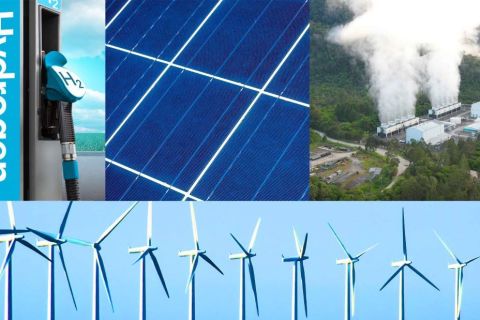SemGroup Corp. has literally been through the ringer. But, much as oil prices have recovered over the past several years, the Tulsa-based company has rebounded from subterranean lows and is once again a major midstream company.
SemGroup LP was founded in 2001. In 2007, it established a public affiliate, SemGroup Energy Partners LP, and began trading on Nasdaq. That year, the company was the 18th-largest private company in the U.S. But by 2008, during the financial crisis that brought so many powerhouses to their knees, SemGroup faced liquidity problems related to its oil-hedging program and warned that it might file for bankruptcy.
After the announcement, Alerian Capital Management and Elliot Associates jointly exercised terms of a secured loan made to SemGroup and took over the general partnership interest in SemGroup Energy Partners LP.
In July 2008, SemGroup filed for Chapter 11 bankruptcy protection, listing debts and assets of more than $1 billion. In September 2009, the company announced a new leadership team led by president and chief executive Norm Szydlowski, an experienced oil industry executive. By December 2009, the company had restructured and emerged from bankruptcy at a reduced size.
Now, with a market cap of nearly $1.2 billion, the enterprise purchases, sells, processes, transports and stores oil, gas, gas liquids, asphalt and refined products. The family of companies under the SemGroup umbrella is fully operational and fully financed.
On December 17, 2010, the company celebrated its listing on the New York Stock Exchange with John Chlebowski, chairman of the board, and Cecil Mooreland, terminal manager, ringing the ceremonial opening bell.
MIDSTREAM: Looking back at 2008, what went wrong?
SZYDLOWSKI: As you recall, when crude prices got so high in 2008, reaching about $147 per barrel, that’s when liquidity really became a problem for SemGroup, too big of a problem. It was a difficult time. Any restructuring is hard on customers, debt-holders and employees, who wonder what the future of the organization might be.
It’s a time of turmoil, conflict and a lot of negotiating back and forth. I think it was probably excruciating for everyone involved, but I have to give them credit that the people were able to get everyone’s interests aligned so it could be restructured. It took 18 months, but the company got back on track and emerged as a C-Corp in November 2009. I came into the company with Bob Fitzgerald, our chief financial officer, as the company emerged.

After bankruptcy and reorganization, SemGroup emerged as one of the major midstream energy companies to list on the New York Stock Exchange.
MIDSTREAM: SemGroup has come a long way since then.
SZYDLOWSKI: It’s been a long road. It’s been just over a year, but sometimes it seems like five. We’ve come a long way, and our people have been working very hard. Having the opportunity to ring the bell at the big board was a shot in the arm for everybody here. It was nice to take a pause and do a little celebrating.
MIDSTREAM: What’s next for SemGroup?
SZYDLOWSKI: We see a lot of growth opportunity with the assets and the footprint we have now. We have 900 employees, and we’ve concluded we are in a great place at the right time. Looking ahead, we are optimistic, and justifiably so.
MIDSTREAM: Is White Cliffs Pipeline still a major crude oil asset for SemGroup?
SZYDLOWSKI: Yes, it’s been an interesting and good investment for us. That asset was conceived of and started with Anadarko Petroleum Corp. and Noble Energy Inc. prior to the bankruptcy. It runs from the Denver-Julesburg Basin, which includes Wattenberg Field and, in an exciting way, the Niobrara play. It’s the only direct pipeline through which producers can move crude into the Cushing interchange.
When it was built, under the terms of the construction, there was an option for our two partners to jointly buy a larger stake, about 48%, in the pipeline one year after it was commissioned, and they did. Then, they sold a portion of that interest to Plains All American Pipeline LP. So now, SemGroup, with 51%, is the majority holder and operator. Plains All American has 34%, Anadarko has 10% and Noble retained 5%.
MIDSTREAM: Do you have plans to expand it?
SZYDLOWSKI: It was designed to be easily expandable as upstream production grows. Today, it has a capacity of 30,000 barrels per day, but with minimal expense we can increase that to 50,000 barrels. With some additional expense, we could add three new pumping stations, which we have places on the line for, and increase that to 70,000. Our design on White Cliffs Pipeline is to be ready when production comes up and the producers are ready.
MIDSTREAM: Tell us about your Canadian assets.
SZYDLOWSKI: Until recently, we had two divisions in Canada—SemCanada Crude and SemCAMS, which is a gas-processing entity. We recently sold SemCanada Crude, which is crude blending and marketing, to a Calgary-based company called PetroGas Marketing Ltd. It includes five blending plants in Saskatchewan and gathering and transmission out of the Bakken play in the Williston Basin of North Dakota.
We kept the Bakken assets, and sold the Canadian assets. We saw that the crude blending and marketing business was underperforming. That business depends on some key measures, including light- to heavy-oil differentials, and the heavy-to-sour differentials. Those collapsed, and it didn’t seem like that was going to change very quickly.
MIDSTREAM: Does SemCAMS process sour gas in Canada?
SZYDLOWSKI: Yes. Those facilities were built in the early 1970s, with a legacy from Chevron Corp. and BP Amoco, and were built to process very sour gas coming out of the Western Canadian Sedimentary Basin. Today, the situation is changing, due to shale gas, horizontal drilling and hydro-fracturing, so our processing volumes have modestly increased.
What is now exciting for that area is the Montney shale play, and behind that, the Duvernay. Those plays are right in the catchment area, in the liquids fairway, which adds value for producers, and are near our processing plants. As we look ahead in that area, we see significant opportunities coming from those shale-gas plays. Like in the U.S., these unconventional-gas plays are likely to overcome the declines in the conventional plays.
MIDSTREAM: Will you have to change the way you manage your assets in order to exploit this new opportunity?
SZYDLOWSKI: Sure. This year, we have reconfigured our plants, which are set up with sour and sweet trains. We took one of the sour trains out of service and consolidated some of our plants to move feedstock from one plant into another. Now, our plant utilization averages about 80%. One of the aspects to consider is the infrastructure that feeds the plants. It’s a significant investment to build gathering systems, so there is an incentive to maximize the use of existing infrastructure.
MIDSTREAM: Do you plan to grow organically or by acquisition?
SZYDLOWSKI: For now, we plan organic growth. We have a list of projects and capacity changes to work through. We can add more tanks at Cushing, and we can expand White Cliffs Pipeline. Our focus, now, is to work on those organic opportunities, but we are not foreclosing other opportunities as they appear.
MIDSTREAM: Does SemGroup have any older assets that will have to be remediated or replaced?
SZYDLOWSKI: Disproportionately, SemGroup has a lot of new kit. For example, all of our tanks at Cushing are new. White Cliffs Pipeline is brand new. In many cases, we have the latest equipment, the latest design, which is good. We do have some older pipelines in Kansas and Oklahoma. But overall, the aging of the infrastructure is a challenge for the industry. We are very cognizant of that. We do a lot of pipeline integrity work.
Now, the challenge for the midstream sector is to maintain very good integrity programs, including running smart pigs that can determine deformations and internal problems. That technology is a fairly new advancement and, as any industry, if we continue to keep up with technology, we can extend the life of steel, but it takes disciplined preventative maintenance.
MIDSTREAM: Do you foresee any other challenges for the midstream sector?
SZYDLOWSKI: I think we have to keep up. We have got to get the infrastructure in the right place as quickly as we can when opportunities surface. We know that new gas plays, or oil plays with associated gas, are going to be hobbled unless we can be there quickly to clear those markets. Our challenge is one of being fleet of foot. And, frankly, I think that is where we have a significant advantage, because we are still relatively small, and we have a flexibility and agility that some of our big competitors no longer have. As these changes unfold, I think we have a particularly good opportunity to participate.
MIDSTREAM: Now that the financial markets are stabilizing, and SemGroup is on solid ground, do you plan any new equity issuance?
SZYDLOWSKI: Not at present. It seems the economy is recovering, albeit at a painfully slow pace, but we are at a good place at a good time right now, particularly in the midstream business. You know, we are the folks that take the crude from the wellhead to the refinery, so some aspects that affect the broader economic swings of crude oil or gas prices do not affect us. Being a fee-based service provider, and being in the middle, we have a bit of insulation from price exposure. For the midstream business, the outlook is good, and even better if the macro environment continues to grow.
MIDSTREAM: SemGroup is in the business of pipelines, processing, storage and retail propane. Do you think it might venture into other businesses, such as water take-away, for example?
SZYDLOWSKI: We would explore things like that, but, for the moment, we have an attractive list of activities in our portfolio, so we’ll continue to focus on the organic.
MIDSTREAM: What does the future of SemGroup look like currently?
SZYDLOWSKI: We are in the right place at the right time. For us, it’s an exciting future teeing up.
Recommended Reading
Johnson Matthey: Syngas Offers Path to Low-carbon Fuels, Hydrogen
2024-09-27 - With syngas, chemical makers like Johnson Matthey have hit a sweet spot in producing no- and low-carbon ammonia, hydrogen or sustainable aviation fuel.
Pacific Northwest Hydrogen Hub Targets Hard-to-Abate Sectors
2024-08-22 - Hydrogen demand is coming from the end users in harder-to-decarbonize sectors, hub association director says.
‘Hydrogen is Happening’: Chevron Pushes Ahead Despite Industry Doubts
2024-11-06 - Facing a myriad of challenges that include policy uncertainty and costs, companies such as Chevron are moving forward with projects and partners to make progress.
Energy Transition in Motion (Week of Sept. 6, 2024)
2024-09-06 - Here is a look at some of this week’s renewable energy news, including $7.3 billion in clean energy funding for rural Americans.
Brookfield Targets More Renewable Power Growth Opportunities
2024-09-11 - Brookfield Asset Management agreed to invest up to $1.1 billion in efuels producer Infinium as it seeks additional growth opportunities.
Comments
Add new comment
This conversation is moderated according to Hart Energy community rules. Please read the rules before joining the discussion. If you’re experiencing any technical problems, please contact our customer care team.





